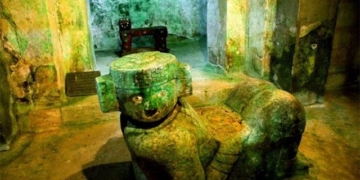When it comes to Vietnamese folk paintings, the first thing that comes to mind is the paintings for the Lunar New Year. This art form embodies the essence that creates the distinctive features of folk paintings in Vietnam. Although there is an exchange of influences, our Lunar New Year folk paintings have quickly developed a unique style that reflects the rich culture of the Tet holiday.
What Makes Vietnamese Folk Paintings Unique?
Vietnamese folk paintings not only depict everyday life with colors and compositions but also imbue profound meanings about human existence, conveying many human hopes for life, the future, and deep-seated wishes.
The tradition begins after the offering to the Kitchen Gods on the 23rd of the last lunar month, with many households eagerly purchasing Tet paintings to decorate their homes, symbolizing “banishing the old and welcoming the new”, which means getting rid of the old and bad, while welcoming the new and good.
In ancient times, people also embedded messages about culture and history, as well as stories reflecting profound humanistic philosophies. Somewhere within these New Year folk paintings, one can find peace, hope, and blessings for the new spring, along with teachings on a positive lifestyle.
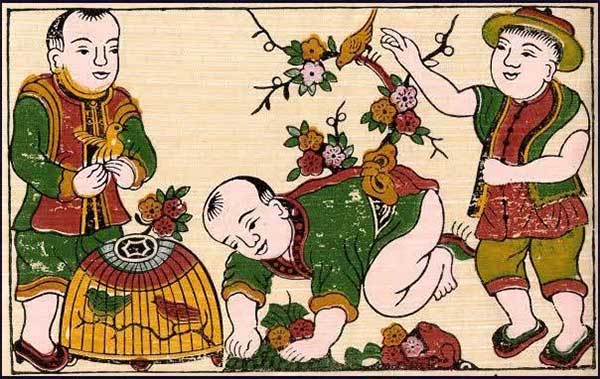
New Year folk paintings express many beautiful wishes for life in the new year.
Vietnamese folk paintings can be categorized into different types, including Tet paintings, worship paintings, historical paintings, satirical works, landscapes, and more. Among these, Tet paintings are the most favored, showcasing themes of abundance and prosperity.
In the book Festivals and Tet Celebrations of the Vietnamese People, scholar Nguyen Van Huyen noted: “The miraculous power recognized in colors and words motivates people to spend money on hanging beautiful strips of paper on doorways, beams, and bare walls of their homes, creating a spectacular sight for the city during the new spring.” This refers to couplets or horizontal panels that celebrate the new year, capturing the essence of spring that embodies the hopes and aspirations of the household.
As for the Tet decorative folk paintings, they not only satisfy the need to adorn homes with warmth and the need for worship but also express everyday wishes for happiness, fulfilling the aesthetic aspirations of friendly and humble people from all walks of life as they welcome the good spring.
Many regions in our country have established famous painting villages, such as Dong Ho in Kinh Bac (Bac Ninh), Kim Hoang in Ha Tay (Hanoi), Hang Trong in Thang Long (Hanoi), and Sinh village in Hue, among others. Notably, the Dong Ho and Hang Trong painting villages stand out among these folk art hubs.
Dong Ho is a small village by the poetic Duong River, formerly known as Mai Village. It has become famous for its painting craft, which is even mentioned in folk songs and proverbs:
“Oh, girl with the green waistband
If you come back to Mai village with me, come back
Mai village has customs and traditions
With a cool bathing pond and a painting craft…”
Every Tet season, Dong Ho village sees a surge in demand, with paintings flying off the shelves. Millions of paintings are distributed nationwide, adding vibrant hues of spring to every home. Hang Trong paintings are usually printed on large paper, with outlines done in black ink, while the remaining colors are hand-painted. This technique creates distinctive nuances that set them apart from other painting styles.
Dong Ho folk paintings often explore simple themes and modest life, such as paintings of chickens, pigs, the “Mouse Wedding,” and more. These are printed in multiple colors on “diep” paper, a durable type of paper coated with a smooth layer made from seashell powder. The printing blocks are made from “thi” wood or squid ink, known for their durability and resistance to damage. The color printing blocks use “giong” wood or “vang tam” wood, which is lightweight and porous, resulting in more vivid colors.
The colors used in the paintings are deeply rooted in nature and folk traditions. For instance, the color of the flower petals comes from red wood, lemon yellow from sophora flowers, black from bamboo charcoal, and blue from indigo leaves.
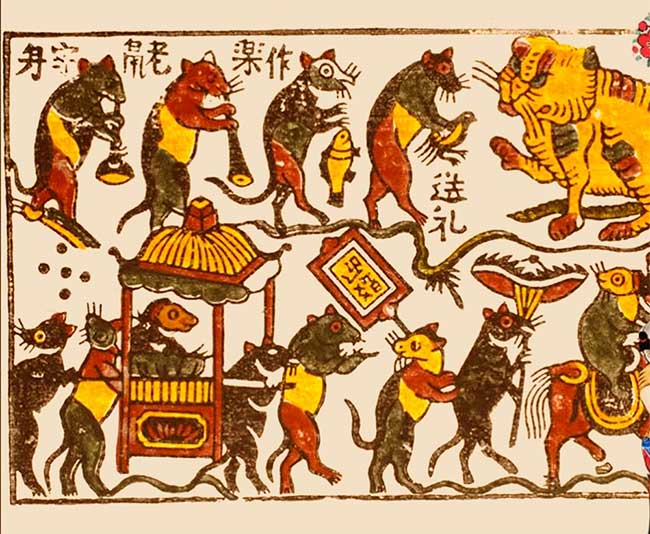
The Mouse Wedding painting is a satire of real-life situations, highlighting the disparity between wealth and poverty, and offers significant educational value through its life lessons.
Some Meaningful Tet Folk Paintings:
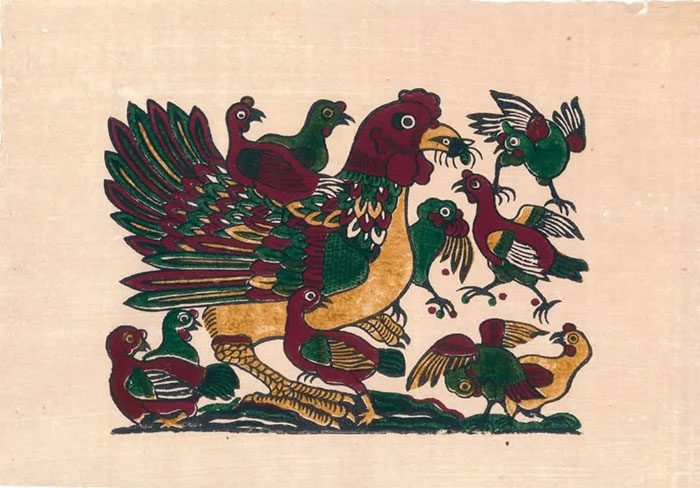
Folk Painting of Rooster Family is hung during Tet with the meaning of wishing the family prosperity and many offspring. Additionally, this painting conveys hopes for abundance and wealth, representing family reunion and togetherness.
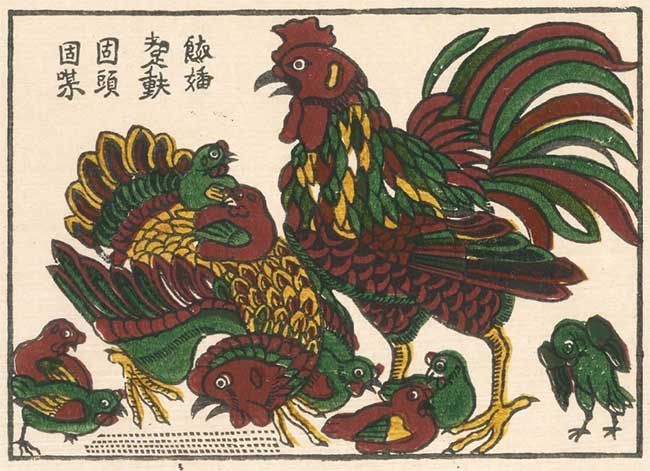
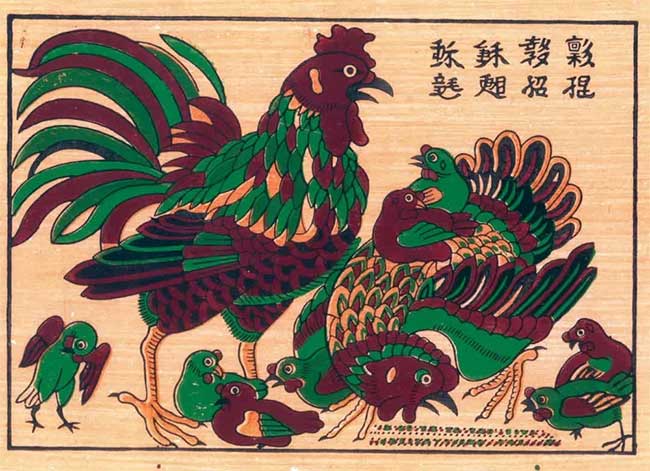
Folk Painting of Rooster Competition implies, as inscribed in the painting: “Many children and grandchildren, like feathers and plumes.” The gathering of the rooster family reflects a warm atmosphere filled with love.
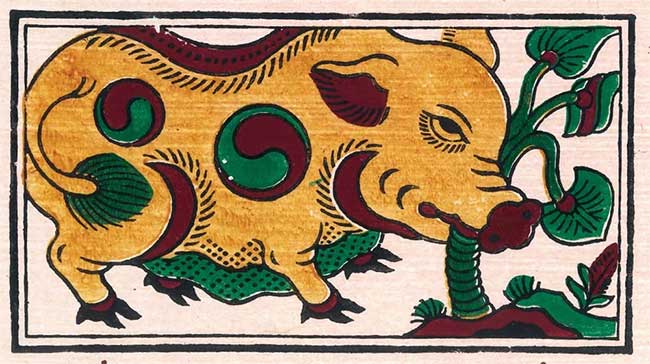
Painting of Pig Eating Taro, with its yin-yang swirl, conveys messages about natural laws and balance. This painting expresses aspirations for a prosperous life.
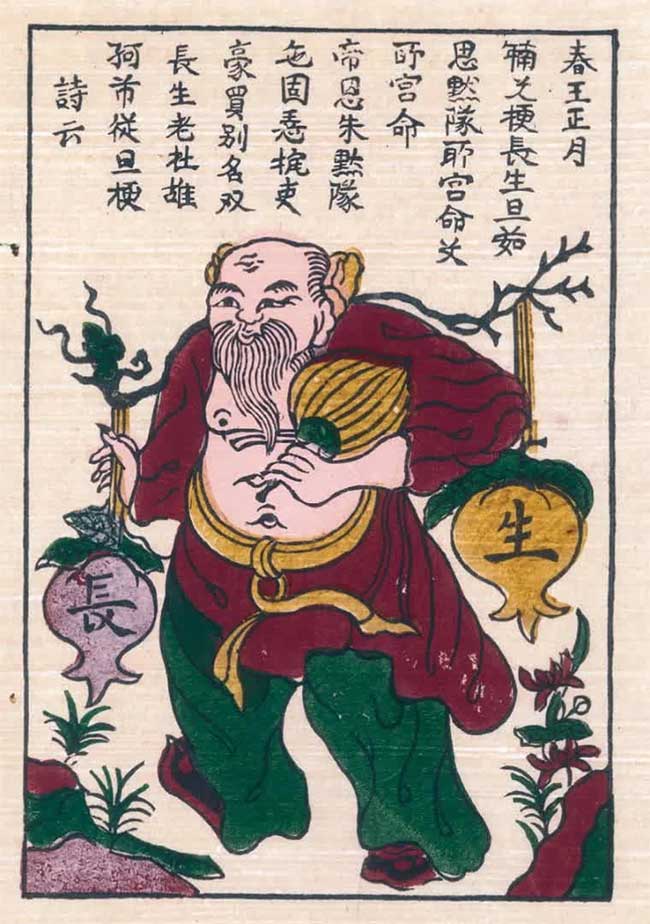
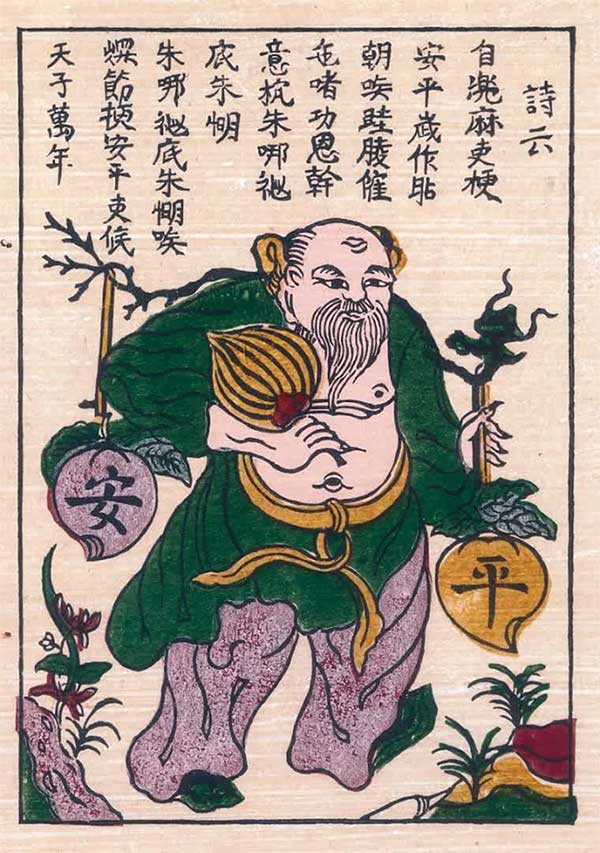
Folk Painting of Mr. Phuc – Mr. Tho is hung during the traditional Tet holiday, symbolizing peace and longevity. Each painting includes a poem conveying wishes for immortality and blessings. The images of peaches and pomegranates symbolize abundance and fulfillment. These paintings are often gifted to the elderly, wishing them peace and longevity in the new year.
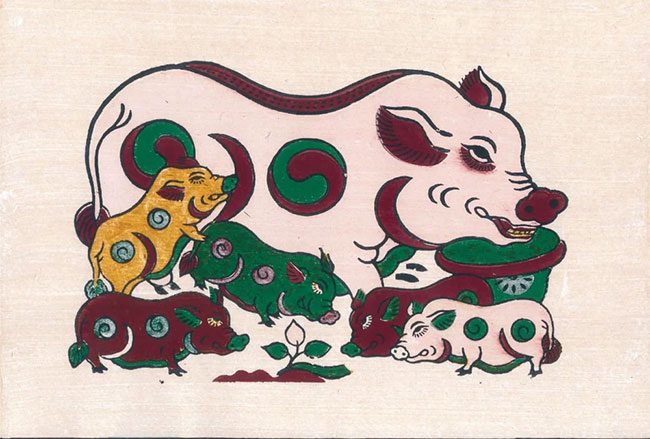
Folk Painting of Yin-Yang Pigs features a mother pig and five piglets (representing the balance of the Five Elements), symbolizing abundance and fertility. This reflects the ancient fertility beliefs of folk culture.
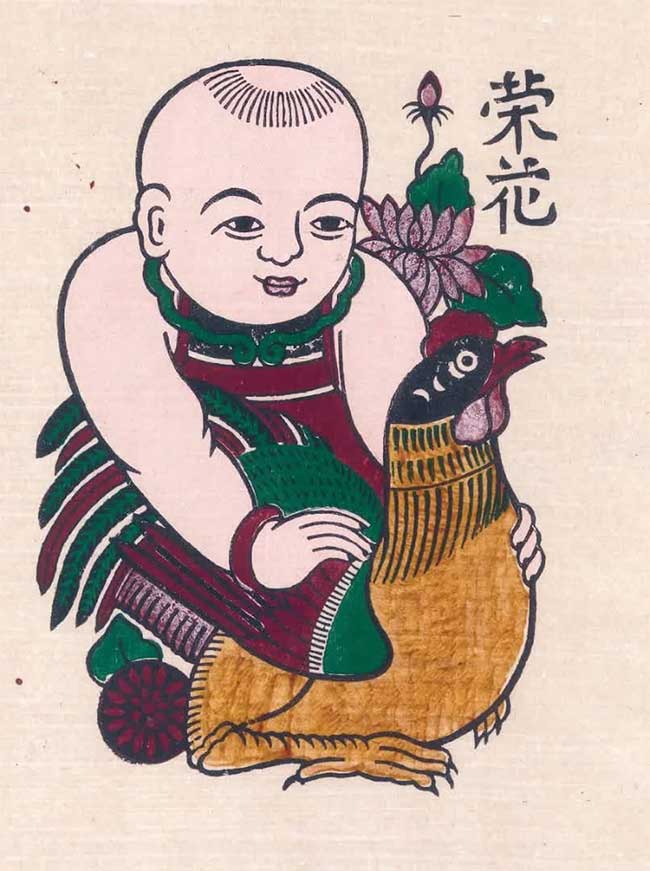
Folk Painting of Boy Holding a Chicken, called Vinh Hoa represents wishes for the boy to encounter good fortune, expressing aspirations for prosperity, wishing for a healthy son who will achieve success in life.
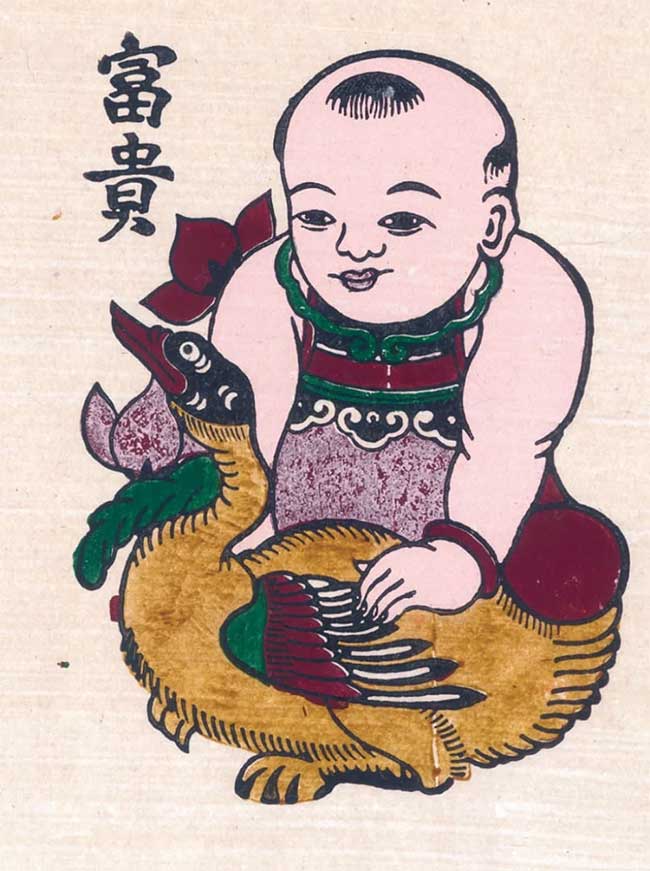
Folk Painting of Girl Holding a Duck, called Phu Quy, symbolizes the wish for a gentle daughter, representing the virtues and happiness of women.
Folk paintings also hold significant importance for children during Tet. Children are the seedlings and hopes of all generations, so they deserve their own Tet celebrations. In village markets and painting villages, alongside the festive paintings, people do not forget to include educational paintings for children.
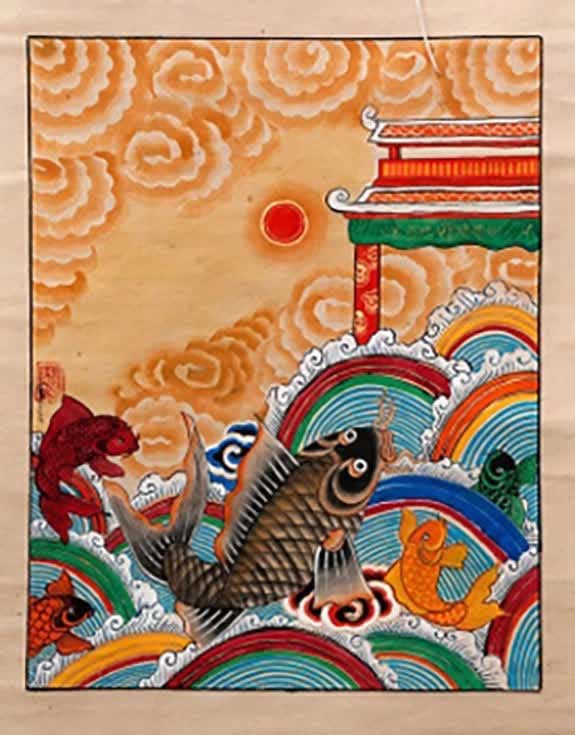
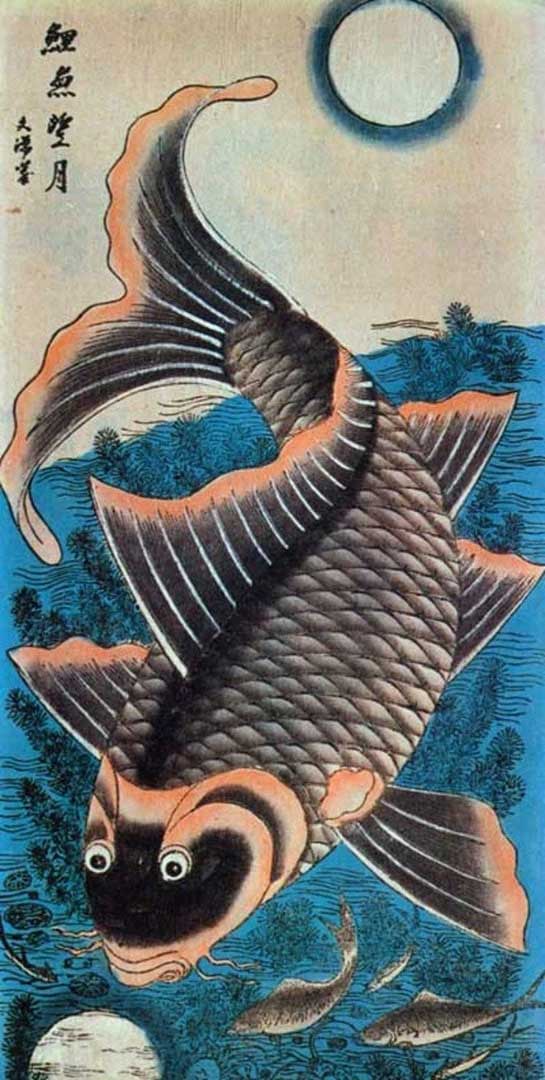
Painting of Fish Gazing at the Moon exemplifies the exquisite craftsmanship of Hang Trong paintings. The carp symbolizes the determination to rise above life’s challenges and the aspiration of fish to transform into dragons. During Tet, these paintings are gifted to children to encourage their studying and examination spirits.
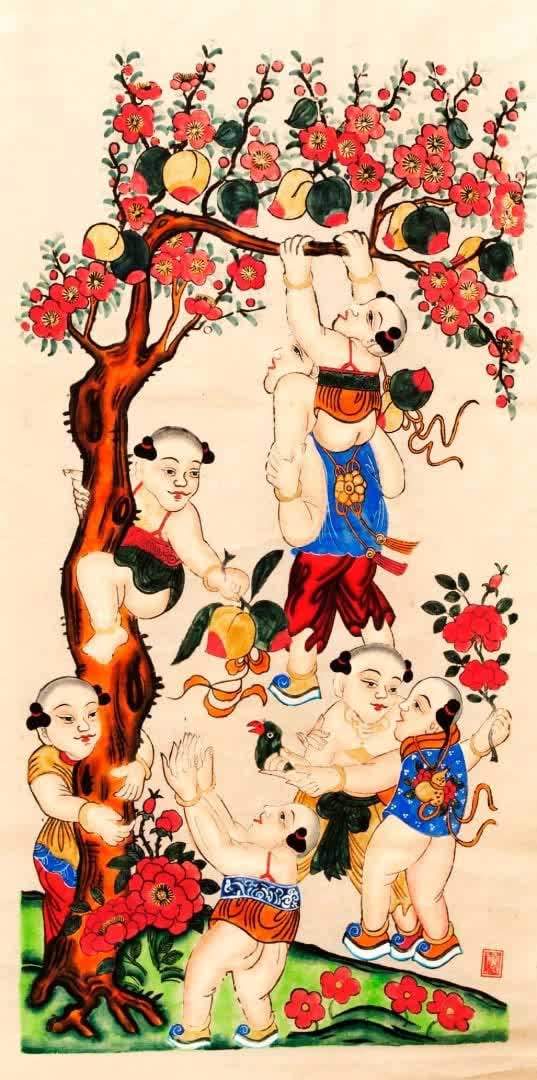
Painting “Thất đồng” brings the fresh, vibrant breath of the new spring. The peach tree laden with fruits is surrounded by seven children, adorned with silver bracelets, with peach-like hair and chubby, beautiful figures resembling fairy children from tales. The painting expresses wishes for a life of abundance, prosperity, and many grandchildren.
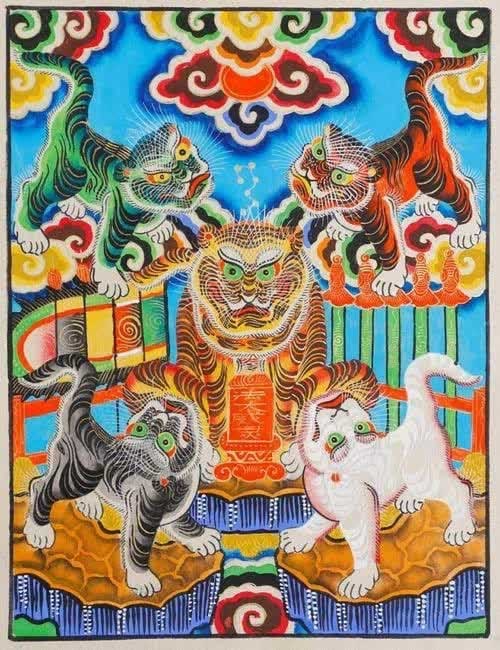
The “Five Tigers” painting symbolizes the deeply rooted folk beliefs of the Vietnamese people. This artwork is representative of the worship paintings from the Hàng Trống painting style. The painting is replaced annually during the Lunar New Year.
















































